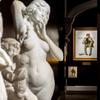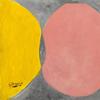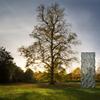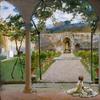Henry Moret and Paul Gauguin at the Pont-Aven School
- November 05, 2019 10:18
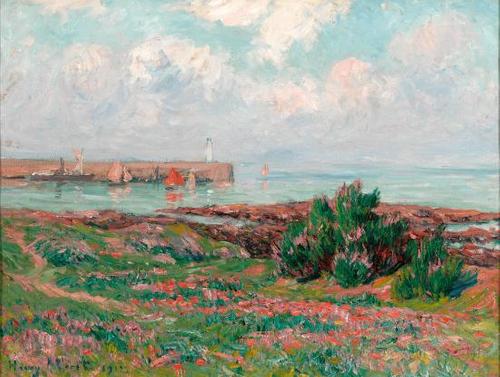
Henry Moret’s lasting reputation in art history is tied to his indelible talent for capturing the bright skies, tranquil waterways and diverse landscape of Normandy, France. Like many of his contemporaries, Moret was fascinated with nature throughout his career, finding inspiration in France’s countryside and coastal towns. His mastery of the plein air technique allowed him to translate his deep appreciation for the natural world onto canvas with brilliance and energy. Despite his pure talent and ardor for the organic world, Moret’s artistic path may have progressed quite differently had it not been for his residency at the Pont-Aven School and under the tutelage of Post-Impressionist eccentric Paul Gauguin.
The Pont-Aven School and Artist Colony
The village of Pont-Aven in Brittany became an attractive summer destination for artists in the 1850s for its low cost of living and picturesque countryside that had not yet been spoiled by tourism. A railway line from Paris to nearby Quimper opened in 1862, encouraging painters to journey outside of urban cityscapes into provincial northwest France. The first official artist group established itself in Pont-Aven during the summer of 1866, and included American art students Robert Wylie, Charles Way, Earl Shinn and Howard Roberts. Brittany opened up new horizons in the 19th-century artistic community with its language, traditional dress, fervent Catholic belief, oral traditions and the ubiquitous presence of granite crosses and churches.
The Pont-Aven School gained immense popularity after English illustrator Randolph Caldecott visited in 1880 in order to illustrate Henry Blackburn's Breton Folk: An Artistic Tour of Brittany. One of the most popular guidebooks of the time, Caldecott's illustrations caught the eye of the avant-garde population, including visiting artist Paul Gauguin.
Pont-Avent reached the height of its popularity during the mid-1880s, thanks in part to leading French Academic painter Jean-Léon Gérôme encouraging his American expats students to visit the countryside commune. Many artists came in search of a new point of departure, hoping to break away from the Academic style of the École des Beaux-Arts and Impressionism, which was beginning to decline. Meanwhile, successful French artists such as William Bouguereau, Louis-Nicolas Cabat and Paul Sébillot continued to spend summers in the village amid its pristine natural beauty.
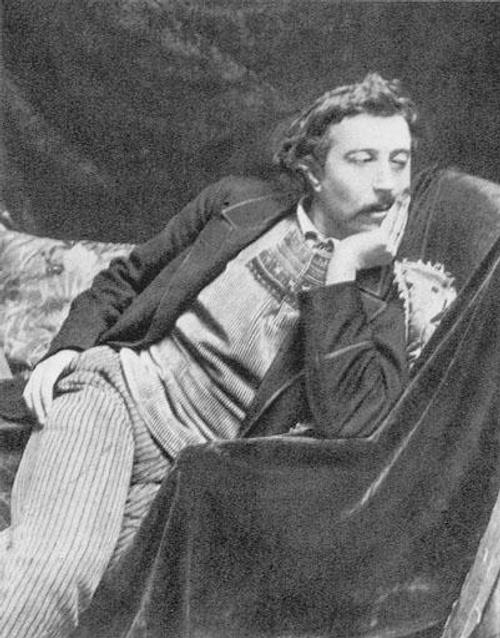
Paul Gauguin Pont-Aven Tenure
Post-Impressionist master Paul Gauguin arrived in Brittany in July of 1886 to spend the first of many summers at Pont-Aven. Gauguin was enticed by the village's cheap expense, but found unexpected and lasting success with the young art students who flocked there in the summer — including Henry Moret, who established himself at Pont-Aven only two years later in 1888.
By the late 1880s, Pont-Aven was no longer a well-kept secret among the artistic community. When the area became overrun with Parisian tourists, a restless Gauguin searched for new surroundings, and he eventually traveled to Panama and Martinique. The artist's years in Brittany officially came to an end in 1891 with Gauguin's first voyage to Tahiti. Gauguin visited Pont-Aven for a final time in 1894, once again lodging with his artistic circle of friends, including Émile Bernard, Charles Filiger, Meijer de Haan and Władysław Ślewiński.
Henry Moret, Gauguin and Synthetism
Henry Moret exhibited for the first time at the Paris Salon in 1880, submitting a landscape of coastal Brittany. During his time in Paris, Moret frequently traveled to Brittany to paint the region he so loved. In 1888, Henry Moret firmly established himself in Pont-Aven alongside Gauguin, Ernest Ponthier de Chamaillard, Emile Jourdan and more. Magnetized by Gauguin’s outlandish individualism, Moret quickly came under the Post-Impressionist painter’s influence during a period of Gauguin’s experimentation with Synthetism.
Developed in Pont-Aven by Gauguin and Émile Bernard, Synthetism sought to deviate from Impressionism by combining images to producing a new results. This revolutionary style relied on abandoning faithful representation in lieu of work based on the artist's memory and emotions surrounding the subject. These compositions consisted of flat, geometric forms separated by dark contours free of perspective and shading with bold application of pure color.

Influenced by Gauguin’s experimental style, the young Moret explored the concept of Symbolism using elements of Synthetism in his works for a brief time. After Gauguin vacated his Brittany residency permanently in 1891, Moret returned to his Impressionist roots and began to cultivate his own distinct style, which would soon after launch the evolving painter into trans-continental success.
Life After the Pont-Aven School
In 1895, Henry Moret formed a close relationship with the famed dealer Durand-Ruel, and his career was officially launched. During their relationship, Moret completed more than 600 oil paintings and some 800 watercolors and drawings. Much of Moret’s prolific body of work was exhibited in Paris and New York, leading to a growing clientele eager to collect his paintings.
Moret eventually returned to Impressionism after 1900, applying small flecks of paint rather than the broad strokes and flattened planes favored by the Pont-Aven artists. Yet, he never abandoned the brilliant color palette that he adopted from Gauguin. Today, his works can be found in important museums including the Manchester Art Gallery, the State Hermitage Museum (St. Petersburg), the National Gallery of Art (Washington DC) and others.
About M.S. Rau:
M.S. Rau has spent more than 100 years earning the trust of discerning collectors worldwide. Located in the heart of New Orleans’ historic French Quarter, our peerless showroom houses one of the world’s most extensive and stunning collections of museum-quality fine art by artists such as Claude Monet and William Bouguereau, 18th- and 19th-century antiques and breathtaking jewelry, including rare colored diamonds.

